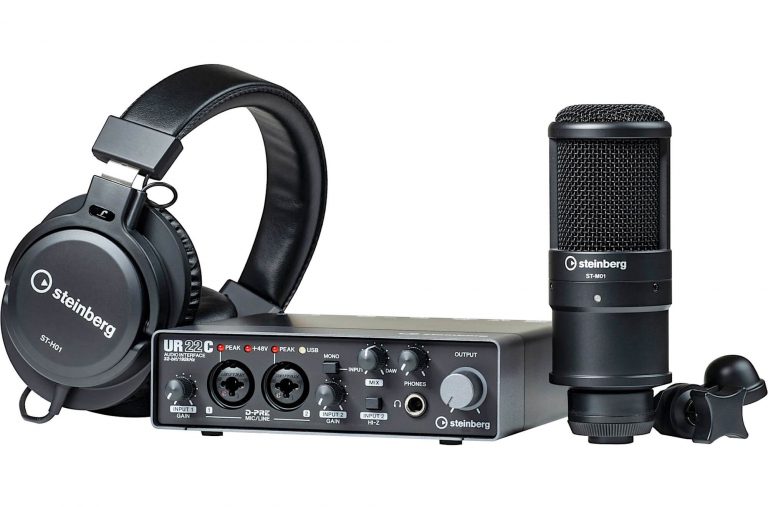Buy a board and a motor
More than a year ago I read the article https://habr.com/ru/companies/first/articles/662570/. Judging by the comments, it caused a lot of different emotions, but this article personally inspired me to create such a thing for myself. On my own behalf, I thank the author for this article.
I will omit a lot of details and immediately say that I settled on a purchased inflatable board and a purchased hydrofoil mast.
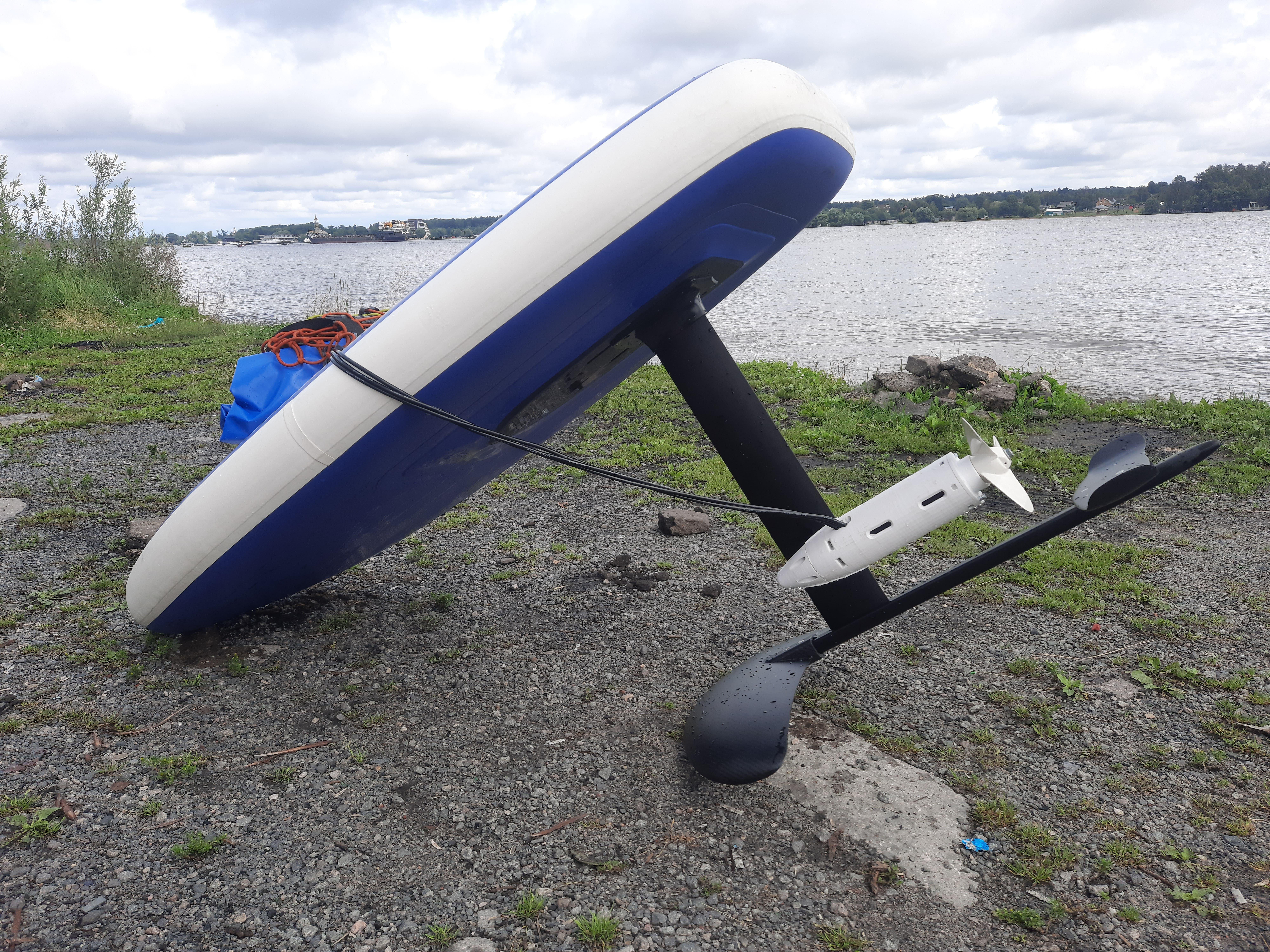
The design attracted me with its readiness, such a complete solution. In the conditions of the apartment and the lack of a garage for me, this is just a great option.
Power point

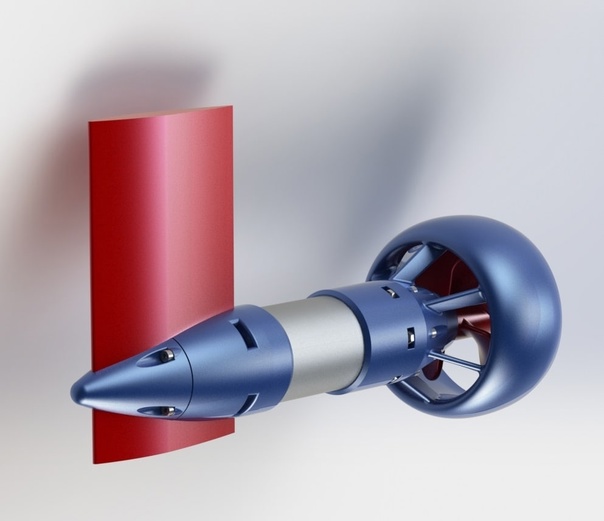
After a little (and not enough) digging on the Internet, my choice fell on a 730 KV brushless motor. Dmitry S. (thank you very much) figured out how to fix this engine on the mast. I didn’t want to spend money that I didn’t already have, and soon I had such a controller:

It took a lot of time to figure out how to set it up. So here is the link https://www.rcgroups.com/forums/showthread.php?2492908-Programming-Mystery-200a-UBEC-boat-esc-V2-1. Suddenly someone will come in handy.
Very soon everything was ready to go to the lake. But I decided to go into the bathroom and try how it will twist:
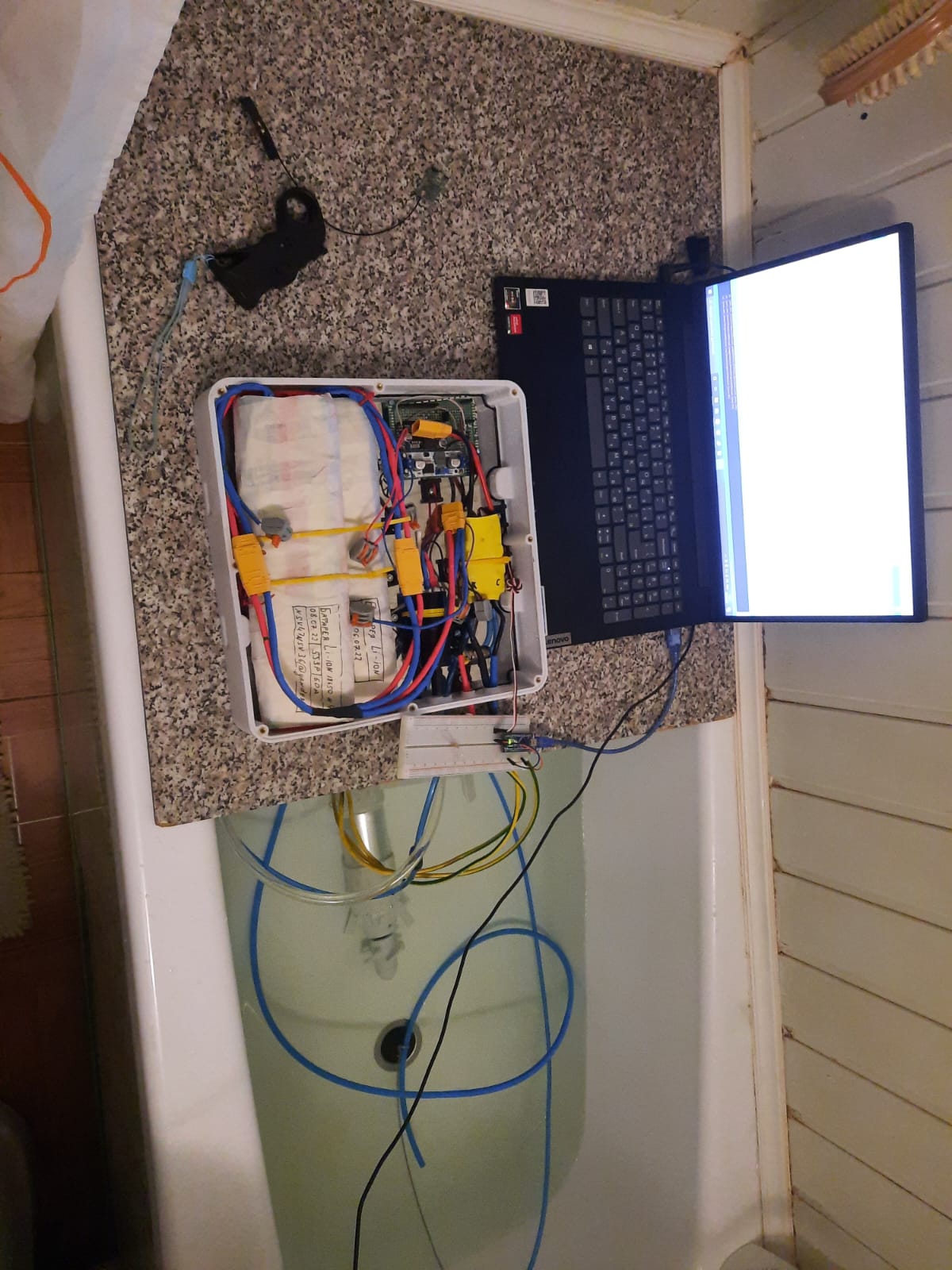

And I observed such a picture for the rest of the summer, autumn and all winter. I printed screws, and they flew apart. Sometimes along the way, breaking the protection of the propeller. Dmitry S. remodeled the propellers, but the work in the water was unstable. Everything started working from the fifth reboot (power off). But it never reached full thrust, and then the propeller broke. And so in a circle.
In fact, this bunch of leaky motor and controller still haunts me. Because I later found out that the controller was no longer amenable to programming. It just didn’t go into programming mode anymore, even though it tried to spin. I found this out by accident on another weekend project of mine, but by this point there had been a few failed bathroom tests. I sinned on the water that floods the engine. I thought that although there are no contacting parts in it, a thin layer of water breaks through, causing another failure. In general, I no longer connected a working controller to this engine in the bathroom.
At one fine moment, I spat on everything and ordered a sealed engine in one well-known online store, supposedly specially designed for hydrofoil and the necessary controller for it. For the new engine, Dmitry S. modeled a new mount (yesterday I removed the propeller protection and this gave additional traction).

The controller to it is programmed using the Vesc Tool (I use the version VESC Tool 3.01 Free of Charge Version). If suddenly, someone wants to repeat the success, in the FOC menu in the Filters tab, you need to disable this phase filtering, otherwise I had difficulties with this (https://vesc-project.com/node/3529).

Finally, everything worked in the bathroom:
Battery
The battery is also a separate expensive story.
My unwillingness to spend money forced me to deal with BMS (battery management system) and I began to experiment. As a result, the following builds began to appear:

I figured a 4s build would be the perfect solution for my hydrofoil needs. This will allow me to test at 12s (3 pcs at 4s) and 20s (5 pcs at 4s). I settled on 12s and 20s because my favorite store offers BMS 12s or 20s to choose from. Leaving separate assemblies is cheap, but charging them is inconvenient. You need to separately charge each and so 12 times (3 of my 4s assemblies are connected in series and 4 of these in parallel), if there is only one charger. I need to understand if 50 volts will be enough to climb the wing and if not, then stop at 84 volts.
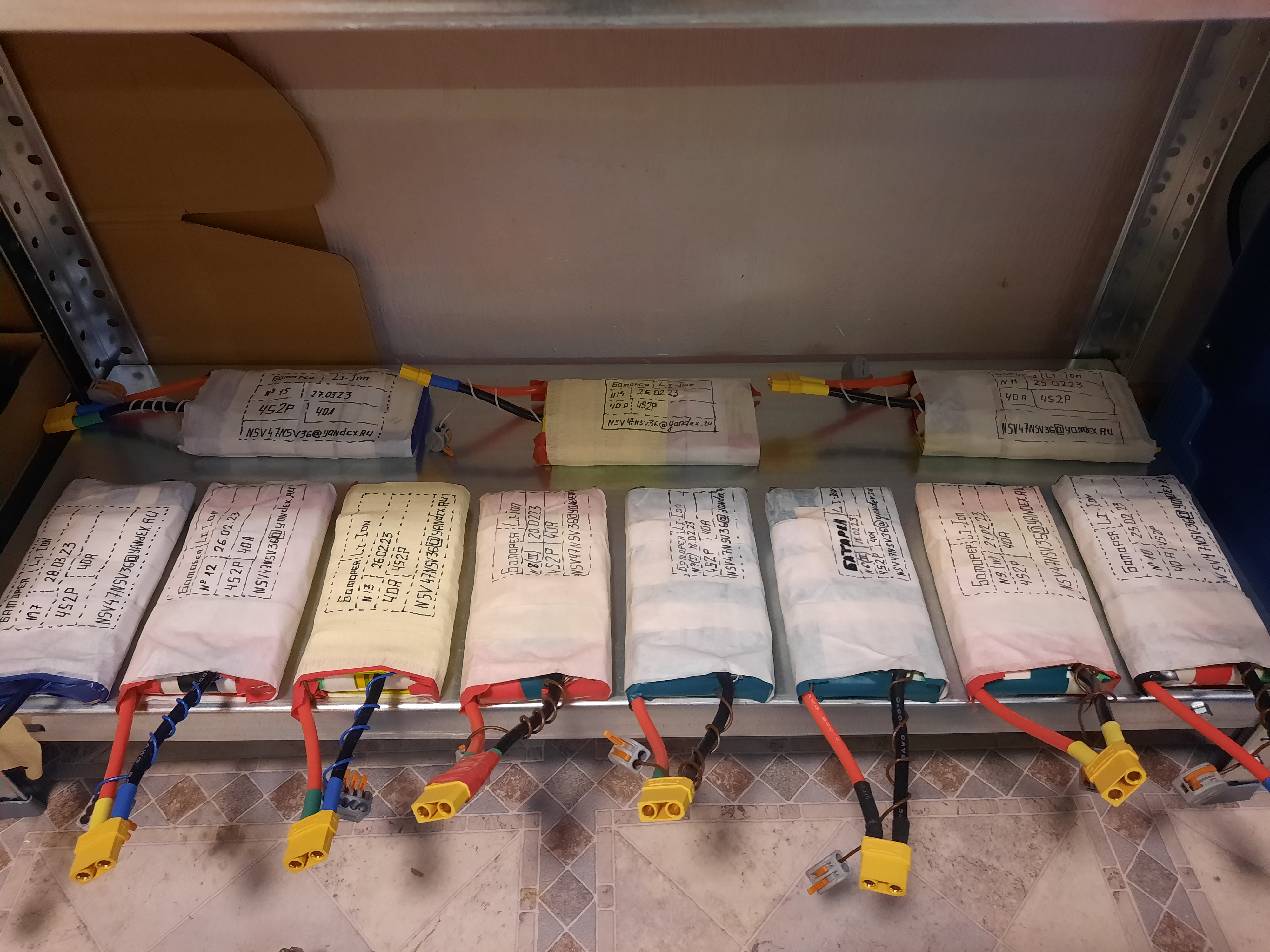
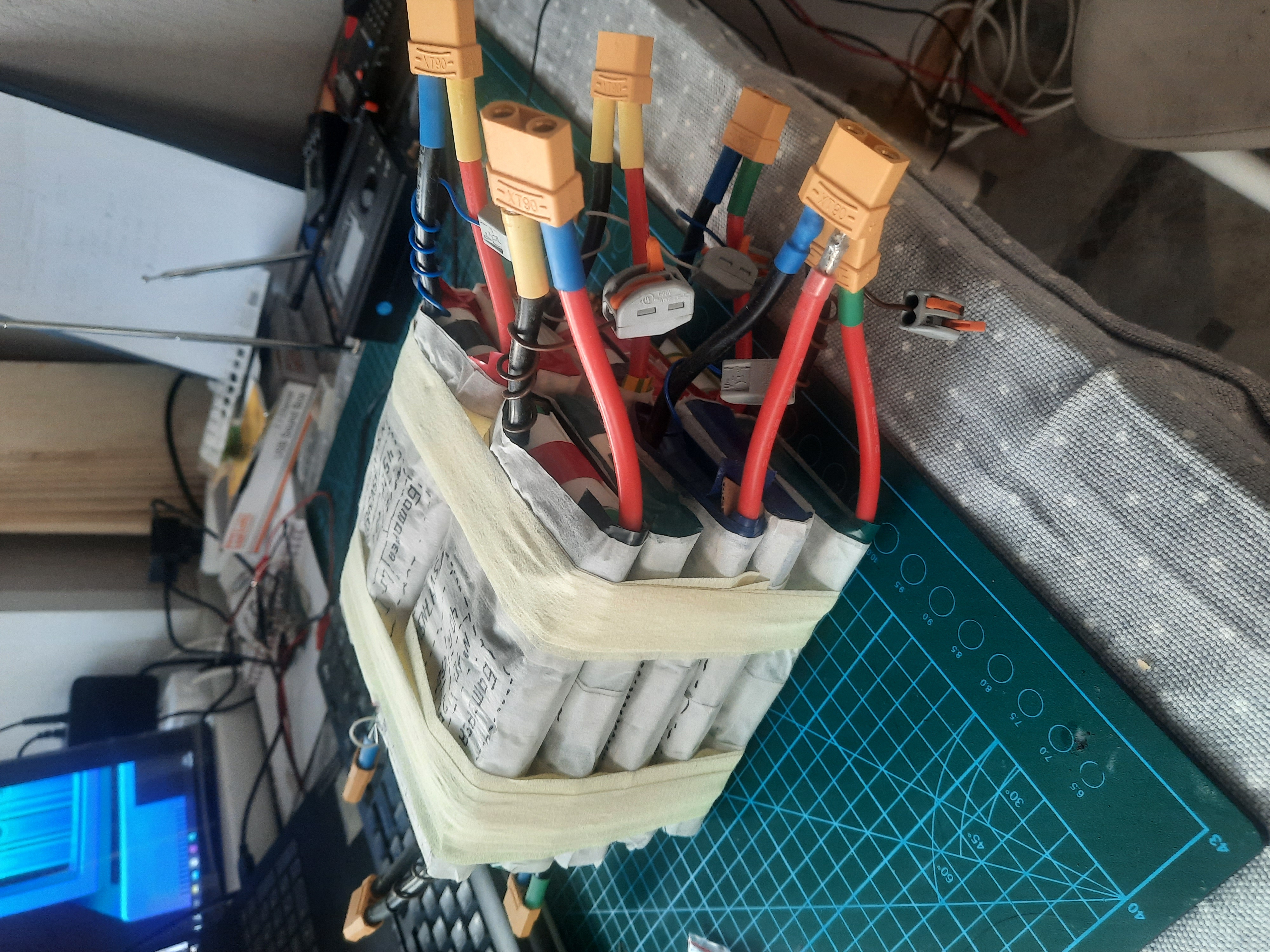

The holes for the controller and batteries are abundantly smeared with sealant and it works. Such a battery dragged me through the water for one hour. But! The last few trips to the water (I can only do it on weekends, I’ve been on the water 3 times in total until today) I still couldn’t get the engine to spin up to full power.
First, I reconnected it all to the maximum 84 volts for this motor and controller. To do this, you also need to make changes to the Vesc Tool in the General menu, Advanced tab:
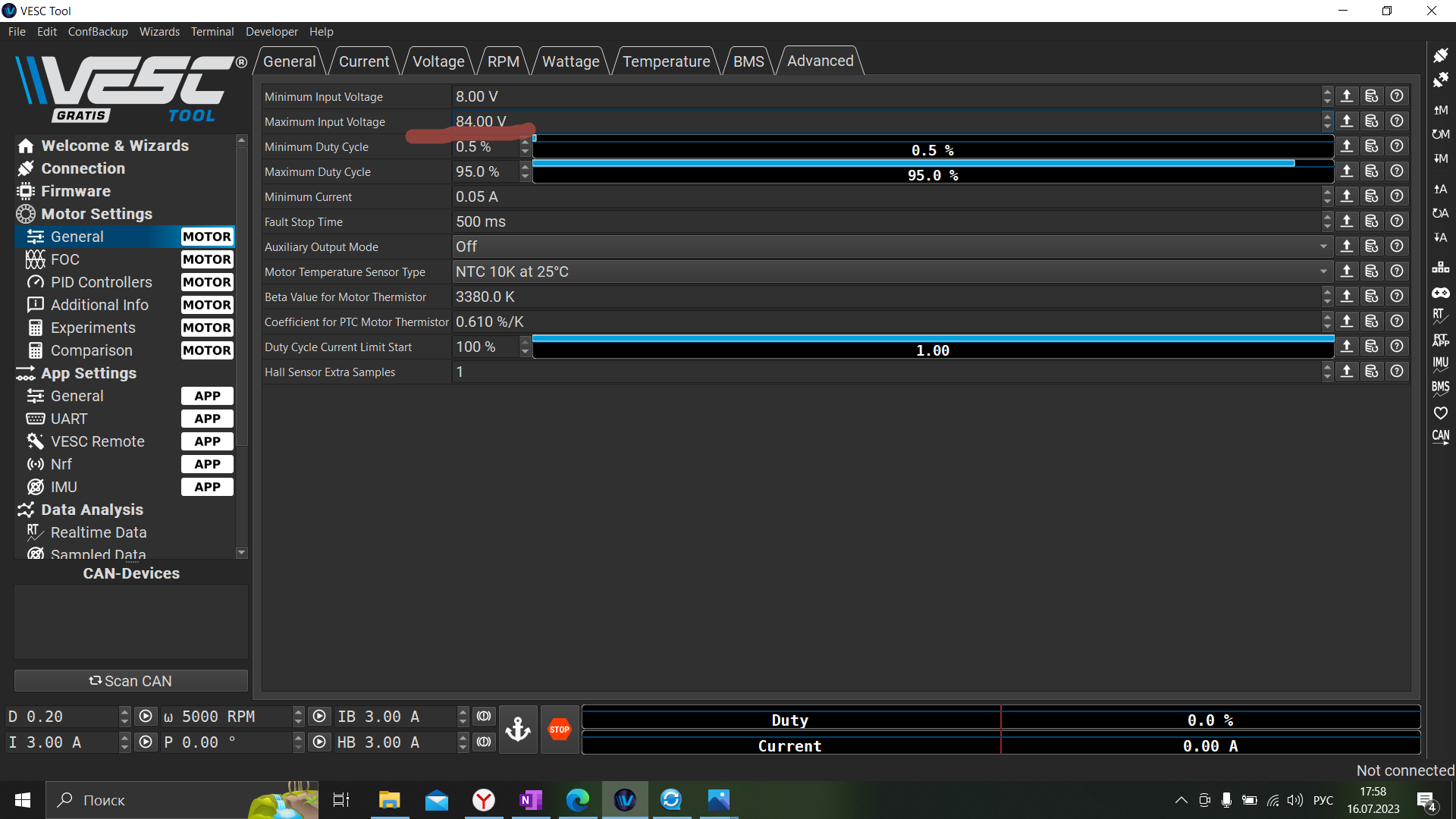
The board went more cheerfully, but it was not enough before climbing onto the wing. I noticed that the maximum speed does not develop. The search for a less daring propeller did not lead to anything (I already use a three-bladed propeller with a diameter of 7 1/4 inches in 5 inches, there are fewer, but a landing one will not work).
And I began to sin on my battery. I thought it wasn’t putting out enough power. Although the seller indicated that this is a high-current Li-Ion battery with a capacity of 2500 ma. When I returned home discharged, I managed to score one in the assembly about 3500 milliamp-hours. And there should be 5 amp-hours, because I connected 2 pcs in one assembly. 18650 in parallel. I concluded that since they lied a little with the capacity, they could embellish it with a current output of 20 amperes.
Bought 3 to start. Li-Po battery 6000 ma 6s 50c, which give out 300 amps. And at the same time I found a setting in the Vesc Tool that limited the current to the engine to 45 amperes.
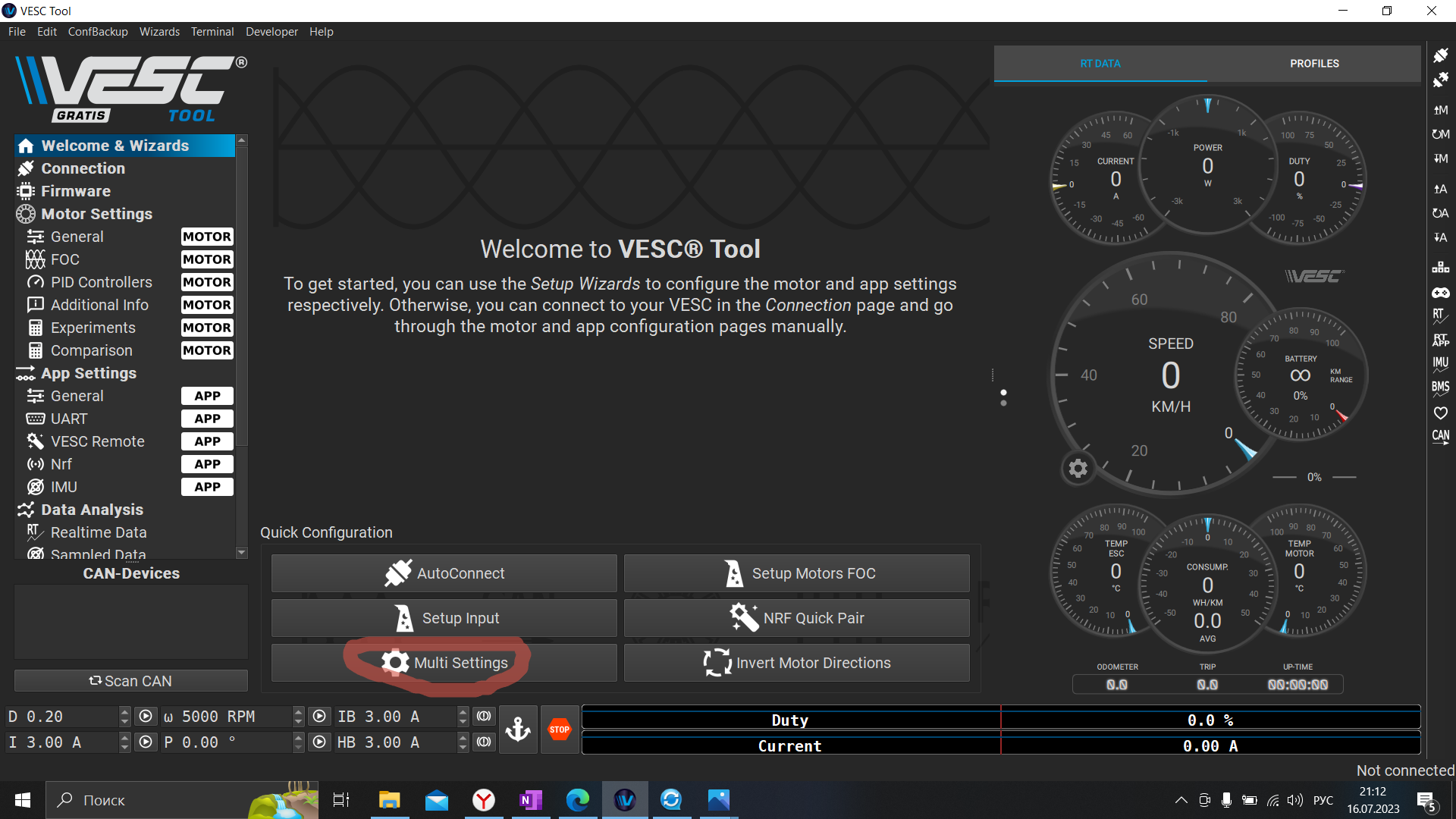
This ill-fated setting of mine is located in the Multi Settings menu, a side menu opens there in which the maximum current is indicated. I changed this setting, connected 3 Li-Pos in series, arrived at the reservoir, went down to the water and today 07/16/23 raised the board to the wing.
This feeling of moving through the water on a hydrofoil is simply indescribable and worth all the money, effort and time spent.

Results
For a good mood and getting interesting emotions, we need:
Board (I bought it. Special inflatable for hydrofoil).
Mast with wing and stabilizer (purchased from a well-known online store).
Motor (bought in the same place. My motor produces 3000 watts (6000 watts peak)).
Mounting the motor on the mast (This is the only one of the components and assemblies that was made by us (thanks again to Dmitry S.) in this implementation. Printed on a regular PETG 3d printer)
Controller (bought in the same place. Designed to control a powerful engine. I made it by the same manufacturer as the engine).
Battery (it’s up to you to buy it or make it yourself. Batteries are generally dangerous, especially homemade ones. But purchased ones are also not far behind. Today I received a signal about a discharge of up to 3.1 volts of one of the cans and headed for the shore at low speed. Opening the case I saw that one the battery is swollen, and the voltage on one of the cans is 1 volt. Li-Po is not recommended to be discharged below 3 volts. That’s it. Now it is charged and the swelling is gone as it never happened, but I’m scared).
Case for controller and batteries. (bought the right one)
Motorcycle luggage nets were used to secure the case to the board.
Battery charger (I use the most popular “folk” blue charger).
A remote control for speed control (at first I thought of making my own remote control, Dmitry P. modeled the case and it turned out what lies at the beginning of this video:
It was necessary to work a lot on ergonomics, reliability, because the connection was constantly falling off, sufficient battery capacity, water resistance (and this is not easy), smooth adjustment of the “gas”. And you also need to have time to work, have time to do other interesting projects and pay attention to loved ones. Long story short, I bought the remote. 2.4GHz, waterproof)
TO DO
Hide the motor wire inside the mast.
Hide the battery inside the board.
Calculate the battery capacity in such a way that there is enough for an hour of rides for all the grandmas.
If you do this, it will be perfect, but for now it will do.
PS With pleasure I will tell, I will show that it is not clear. And I will even give links to what I myself used.
S. N.




